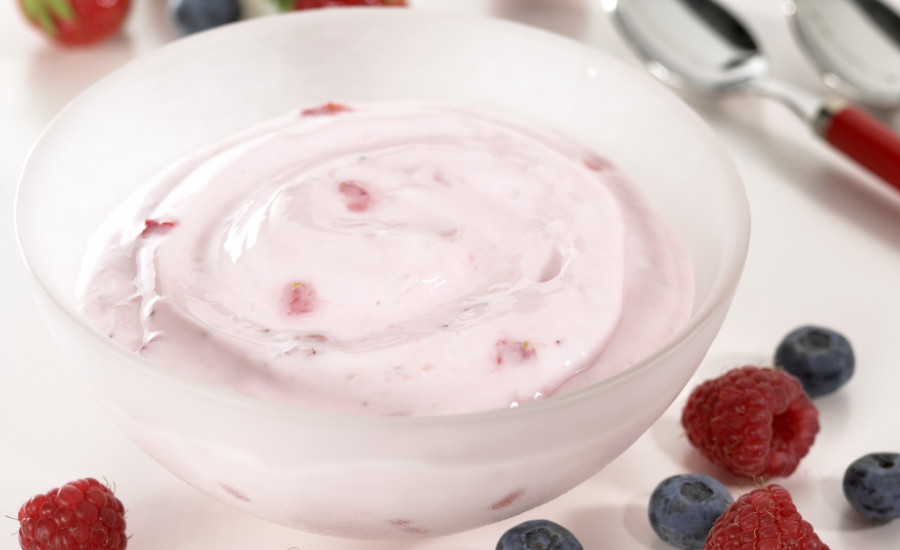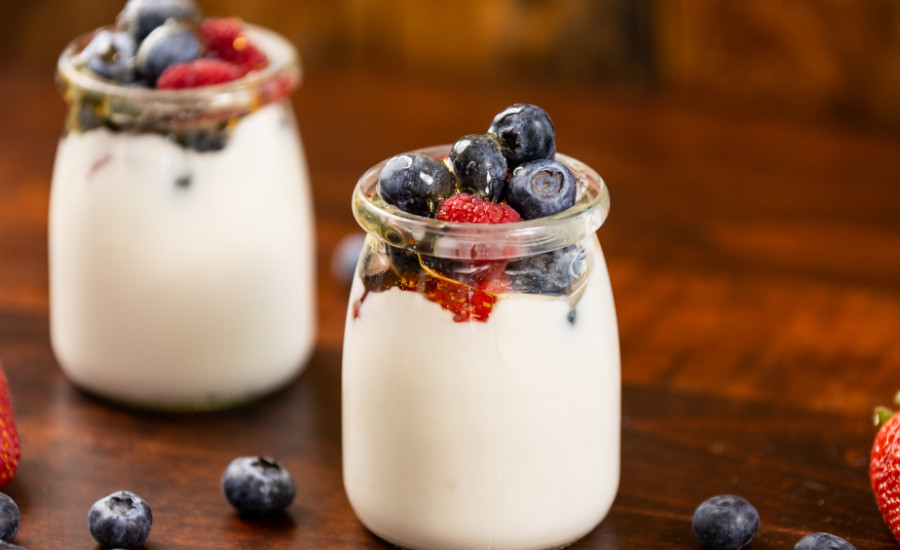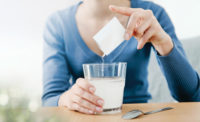Over the years, there are few things people have enjoyed more than sugar. It is of course a staple of many foods and beverages. It is also a topic songwriters cannot stop thinking about. An internet search revealed 67 songs with either the word in the title or mentioned throughout the song, with “Sugar Sugar” by The Archies, “Pour Some Sugar on Me” by Def Leppard, “No Sugar Tonight” by The Guess Who, and “Sugar” by Maroon 5 among the biggest hit songs written with the word in the title.
Today, sugar takes on a different meaning, with reduced sugar and no-sugar-added serving as two of the hottest phrases in the dairy industry. According to the American Heart Association (AHA), the average American adult consumes 77 grams of sugar per day, more than three times the recommended amount. But the good news is seven out of ten people are willing to substitute a favorite snack for a lower-sugar alternative, reports the AHA.
The International Food Information Council’s (IFIC) 2022 Food and Health Survey released similar figures, as it found 73% of consumers say they are trying to limit or avoid sugars in their diet. IFIC ranks sugar reduction as the top way to make processed foods and beverages healthier, outranking things like eating clean, removing other negatives (like sodium or fat) or adding positives (like protein or fiber).
Local and national governments have also taken notice, with more than 35 countries, cities and states implementing sugar taxes since 2015, according to Irish-based Kerry’s “Innovative Taste for a Better Life and Planet” report.
Hence, the global sweeteners market size is expected to reach $97.57 billion by 2030, expanding at a compound annual growth rate of 2.4% annually through 2030, according to Dublin, Ireland-based Research and Markets.
Rosemont, Ill.-based Batory Foods is one company placing a big bet on sugar reduction. In January, the company announced its new entity, Batory Sweetener Solutions, which comes on the heels of Batory Foods’ acquisition of Sweetener Solutions in early 2022.
Batory Sweetener Solutions will be dedicated to any and all initiatives surrounding food and beverage sweeteners, from conventional ingredients and low-sugar alternatives to precision blending and custom formulation.

London-based Tate & Lyle is another company placing a huge emphasis on sugar reduction. Via its low-and no-calorie sweeteners and fibers, Tate & Lyle points out that it has taken 4 million tons of sugar out of people’s diets against a target of 9 million tons by 2025.
“We are living in an immensely challenging economic environment and life is getting harder for people everywhere. That’s why our purpose of Transforming Lives through the Science of Food, and through it the positive impact we can have on healthier living, our people and local communities, and the planet, has never been more important to us,” says Nick Hampton, CEO of Tate & Lyle.
Sugar and dairy
Sugar reduction is a huge topic for dairy processors, as 54% of U.S. consumers state it is important when shopping for dairy products, according to ADM research. Plus, when evaluating a new dairy product, 54% of consumers say they review nutrition facts, with 47% reviewing “added sugar per serving.”
At the same time, consumers are also focusing on their emotional well-being as an important part to supporting their holistic health and wellness, and they see enjoyment of foods and beverages as a key piece to that, mentions Sarah Diedrich, marketing director for Global Sweetening & Texturizing at Chicago-based ADM.
“Interestingly, research shows that having appealing taste and less sugar are equally important priorities when purchasing a new food or beverage,” Diedrich maintains. “Dairy brands that tick the boxes on reducing sugar and creating a delicious sensory experience will capture consumer attention, as well as influence shoppers’ decisions around repeat purchasing.”
To look at sugar-reduction more in-depth, it is important to first define why sugar consumption is causing a crisis and why.
“Sugar is the No. 1 contributor to metabolic disease like diabetes and obesity. It has also been associated with neurodegenerative diseases like dementia and Alzheimer’s,” says Thom King, CEO of Portland, Ore.-based Icon Foods. “Since the pandemic, consumers have become more and more aware of choices they make when it comes to food. Less sugar across the board leads to better health. Products lower in sugar and higher in fiber contribute to weight loss, a healthier immune system and all around better health.”
The overconsumption of sugar is a global challenge that is actively being addressed by numerous global organizations, ingredient manufacturers and consumer packaged goods companies, adds Kandice Longmire, business development manager — sugar reduction for Batory Foods.

“With the rise of type II diabetes and obesity rate among children and adults, reduced sugar products are an integral part of improving the health of the population,” Kandice Longmire, business development manager — Sugar Reduction for Batory Foods, maintains. “A reduction of sugar in one’s diet is associated with reduced inflammation, improved oral health, better regulation of blood sugar levels and a heart health boost. It is imperative to establish healthier eating habits from an earlier age such as the consumption of more fruits and vegetables, whole grains, probiotics and less sugar.”
Less sugar at a cost?
Clearly, consumers are seeking reduced sugar in the foods and beverages they consume. However, finding the right formulations that do not jeopardize taste can be difficult for ingredient suppliers. Fortunately, many have proven successful in taking on this challenge.
As Christine Addington, senior technical service representative for Minneapolis-based Cargill suggests, if a product doesn’t taste good, it won’t earn a repeat purchase. However, given the advances in sugar-reduction technology, significant cuts in added sugar levels are possible across the full range of dairy and plant-based dairy alternative applications.
“Depending on the amount of sugar reduction and the application, it can require careful formulation, as sugar performs many functional roles beyond sweet taste, impacting mouthfeel, texture, microbial control, and in frozen desserts, freezing point depression,” she states.
In its “The right taste for healthier beverages” report, Kerry points to five application techniques that may help improve the taste of reduced-sugar products. They are:
- Using natural flavor systems to change the perception of a product through cleaner labels.
- Reducing acidity to balance out and improve perceived sweetness when implementing a sugar-reduction program.
- Partial replacement of citric acid in a formulation with malic or lactic acid.
- Employing masking systems. With the ability to be declared as natural flavorings, these are invaluable in helping to mitigate the sensation of off-notes, especially when using sugar-alternative sweetener systems.
- Increasing the perception of sweetness through flavor tonality choices, lowering the impact of the chosen sweetening system.
Kerry’s Tastesense is one example of an ingredient that purportedly maintains taste, while allowing manufacturers to reduce sugar by 30% in beverages, the company states.
Looking at other ingredients, erythritol may shine in applications like ice cream, where it has a greater impact on freezing point depression compared to sucrose, Addington suggests. It often is paired with stevia.
In addition, Batory Foods has seen tremendous growth in the areas of natural, non-nutritive sweeteners such as stevia and monk fruit as well as rare sugars such as allulose across multiple product categories.
“One prime example of the expansion of reduced-sugar options within the dairy category is yogurt and other cultured products,” Longmire explains. “Yogurts that deliver 10-15g sugar per 5.3-ounces (150g) serving are quite prevalent in supermarkets. In recent years, yogurts that deliver 5g or less sugar per 5.3-ounce serving occupy space on the supermarket shelves due to consumer demand.”
King echoes the same sentiment regarding allulose, a rare sugar that has no metabolic effect or effect on blood sugar, tastes like sugar and has the same mouthfeel. “Combining allulose with additional sweeteners results in a balanced, neutral sweetness profile to achieve sweetness parity with sugar,” he says
Beyond the aforementioned ingredients, Corey Scott, principal nutrition scientist at Cargill, points to high-intensity sweeteners (such as sucralose, monk fruit and acesulfame-K and the aforementioned stevia) as ingredients that provide the sweet taste of sugars but little to no calories. Several human clinical studies show that high-intensity sweeteners, when used to displace sugar and calories in the diet, support weight loss and are useful tools that can aid in overall weight management. Is any of this a quote?
“Our advanced stevia products have excellent versatility in dairy and dairy alternative products. For brands that prefer a leaf-based solution, our ViaTech portfolio includes options tailored for use in dairy applications and is a good choice for brands aiming for low- to moderate- sugar reductions,” Addington says. “For those with ambitions for deeper sugar reduction (including no-sugar-added), we recommend EverSweet, our Reb M and Reb D stevia sweetener, which is made via fermentation.”
To keep up with demand, ingredient isuppliers are introduction new ingredients to their sweetener lineup.
For example, ADM introduced also introduced a new ingredient to its stevia portfolio, its SweetRight Stevia Edge-M, This new solution is designed to offer improved sweetening, reduced bitterness, and increased solubility attributes compared to Rebaudioside (Reb) M. Additionally, ADM debuted several more ingredients to meet reduced-sugar needs, including SweetRight agave, which fulfills modern consumers’ demands for organic, naturally sourced sweetness, the company says. “With a low glycemic index and sweetening potency 30% higher than sucrose, less input of SweetRight agave is required to achieve the same sweetness level, supporting highly sought-after sugar- and calorie-reduction goals,” Diedrich notes.
Also available are BENEO’s plant-based ingredients that tend to overcome hurdles and deliver in terms of taste and texture when managing sugar reduction, states Kyle Krause, regional product manager, Functional Fibers and Carbohydrates, North America, BENEO, Parsippany, N.J.
“For instance, BENEO’s prebiotic chicory root fibers Orafti Inulin and Oligofructose can be used in recipes to replace sugar as they help to create a smooth and creamy texture and pleasant taste in reduced sugar products,” Krause states. “ … In addition, BENEO’s chicory root fibers also support a low-glycemic diet when replacing sugars or other high glycemics in food formulations.”
Orafti Inulin and Oligofructose also improve a more balanced intestinal flora by stimulating the growth of beneficial bifidobacteria, an important element of good digestive health backed up by scientific research, Krause adds, also pointing to another ingredient, Isomalt.
“Isomalt is the only sugar replacer derived from sugar beet and has only half the caloric value of traditional sugar. Beyond its low effect on blood glucose, it is also tooth-friendly, carrying a health claim by the FDA for not promoting tooth decay. At the same time, Isomalt provides a bulking effect as well as a sweetening profile similar to sucrose but without the undesirable cooling effect of other polyols,” Krause says.

Hannah Ackermann, registered dietitian and senior manager at Schaumberg, Ill.-based COMET, stresses, however, that it is important to take gut tolerability into account when choosing a sweetener for any dairy product, as consumers often eat more than the recommended serving size, such as ice cream. “Many non-nutritive or reduced sugar sweeteners can cause gastrointestinal (GI) distress or bloating when multiple servings are consumed simultaneously,” she asserts.
According to Ackermann, more prebiotic soluble fibers are coming to market to address tolerability concerns. These novel prebiotics are from different families of fibers, including long-chain polysaccharides, resistant starches and polyphenols.
“For example, COMET’s Arrabina is an arabinoxylan hemicellulose polysaccharide fiber,” she explains. “Its longer chain structure makes it better tolerated by the gut than oligosaccharides as it digested later in the GI tract. Results from COMET’s clinical trial show that consumers can take up to 15 grams per day of Arrabina (five servings) with no negative gut or bowel reaction. The longer chain also has formulation benefits as it is not as vulnerable to degradation in low pH and high-temperature cooking/baking applications.” (can you paraphrase some of this?
Final takeaways
Experts note that the reduced sugar and no-sugar-added craze is not going away anytime soon, regardless of macroeconomic or geopolitical factors.
“Now more than ever, consumers are looking to manage their overall well-being through foods and beverages. Reducing sugar intake is certainly a part of that, and a priority for many,” says Carla Saunders, Cargill’s senior marketing manager for high intensity sweeteners.
The sugar reduction trend is here to stay, asserts COMET’s Ackermann. “The time is now for the dairy foods industry to take advantage of the prebiotic fiber opportunity in reducing sugar and expand into the functional foods category.”
With the ever-increasing global focus on the importance of blood sugar management in maintaining a healthy lifestyle, BENEO also expects the reduced-sugar trend will continue well into the future.
“In fact, recent data shows that almost half of U.S. consumers (45%) are very or extremely concerned about high blood glucose levels and 40% of U.S. consumers say they have plans to address their blood sugar levels over the next 12 months,” Krause states.
Consumers want to make healthier choices and reducing one’s sugar intake is one of thebest ways to accomplish that goal, says Mathew Brady, marketing specialist at Fenton, Mo.-based IFPC.
Brady concludes: “Consumers are OK with indulging in sugar-filled treats from time to time and when they want something sweet without the harmful effects of sugar may cause their bodies, they will turn to products with non-artificial sweeteners and reduced sugar.”



